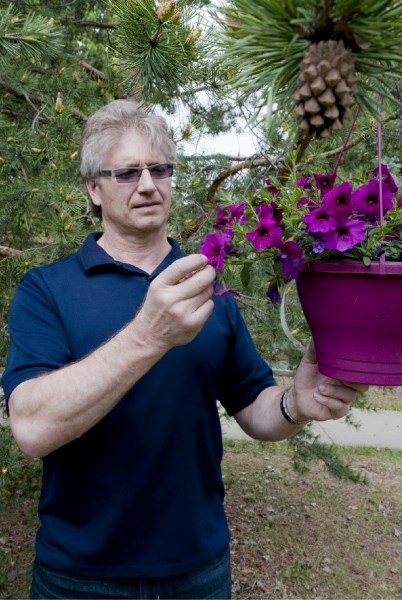It took 45 years, but St. Albert finally has an official tree, shrub and flower.
City council voted unanimously this week to make the Scots pine, highbush cranberry and petunia the official coniferous tree, shrub and flower of St. Albert. The city actually picked these plants on May 11, 1966, according to a council report, but never officially adopted them until this week.
This is a loose end that's been left hanging for 45 years, says Mayor Nolan Crouse, one that recognizes the efforts of pioneers such as Andre Gate, the city's parks planner in the 1960s. "It's really part of our botanical heritage," he says and ties in well with the city's sesquicentennial.
These official plants will reinforce the city's reputation as a botanic arts city, Crouse says, and will be planted more often in the future. "When our tourism people put flowers on boulevards, they're going to put in petunias."
A centennial idea
The story of St. Albert's official plants starts in 1966, according to council reports. Then-mayor Richard Fowler struck a committee to come up with ideas to celebrate Canada's centennial. One of that group's first moves was to pick an official flower, shrub and tree for the town.
The plants were picked based on ease of cultivation, says Bob Russell, one of the committee's members, rather than historic ties to St. Albert, as they wanted people to grow them in their gardens.
Petunias were cheap, easy to grow and popular, he recalls, so they made the cut. "You can buy a packet of seed and share it with four to five neighbours."
He lobbied for the white spruce due to its history with St. Albert, but was voted down in favour of the Scots. As for highbush cranberries, they were a native species common in local ravines and made great jelly.
The committee made its recommendation on May 11, 1966 and town staffers started placing the plants around town. However, for unknown reasons, council never formally adopted the recommendations.
About a year and a half ago, says Jennifer Jennax, the city's general manager of business and strategic services, former city parks planner John Beedle called the city and asked about the plants. After a bit of research, she says, staff spotted the oversight and raised it with council. "Many people already thought the petunia was our official flower," she says, as it's found in planters throughout town.
Russell says he was absolutely amazed when this motion appeared before council, as he thought the plants had been long approved. "I'm delighted that it's coming to a conclusion."
Meet the florae
The Scots pine is a hardy and dependable species found throughout St. Albert, according to Beedle, who spoke about the plants before council. "They were more of a parks tree, a specimen tree," he says, and tended to be planted in the middle of other trees along buffer strips.
You can identify this tree by its bark and needles, says local arborist Jim Hole. Scots pines have light grey bark that seems to be peeling or flaking away from its trunk, revealing reddish, cedar-like wood. Its needles are about the length of your thumb, stiff, and emerge in pairs from its branches.
The highbush cranberry is found in many natural areas, Beedle says, and grows about two metres tall. "It has a very attractive bloom in the spring," he notes, consisting of clusters of tiny white flowers that become bright red round berries. The berries are quite tart, edible and have big stones in their middle.
Petunias come in a wide variety of colours, Hole says, and produce a single trumpet-shaped blossom about four centimetres wide. You can find them in planters all over the city.
They're very trustworthy plants, Beedle says, and can survive late into fall. "Once they start blooming, they never quit. They just flower madly."
Their brilliant colour also adds that "wow" factor to local roads. "You don't have to look for them. They hit you in the eye when you go by."
DQ due to disease
The committee also picked an official deciduous tree for St. Albert: the Schubert chokecherry, known for its beautiful reddish-purple leaves and round black berries. There's one in front of St. Albert Place.
Council chose not to support this pick after Beedle pointed out that the tree was susceptible to black knot, a fungal disease now ravaging the city. Council asked the St. Albert Botanic Park society to recommend an alternative tree by Oct. 1.




